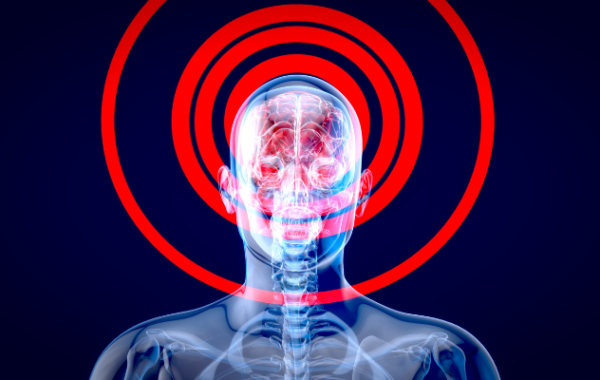Steel Trap Memory: Boosting Recall with Techniques

Steel Trap Memory: Introduction
Have you heard the old saying, “He has a steel trap memory?” At some point in our lives, we have all struggled with remembering something important. It could be a name, a date, a phone number, or an address. In today’s fast-paced world, with so much information to process, it can be challenging to retain everything we need to remember.
However, having a good memory is essential for our personal and professional lives, as it helps us to be more productive, efficient, and successful. The good news is that there are techniques we can use to improve our memory and recall. In this article, we will discuss some effective techniques for boosting recall and achieving a steel trap memory.
Understanding Memory and Recall
Before we delve into the techniques for boosting recall, let’s first understand how memory and recall work. Memory is the ability to encode, store, and retrieve information over time. It involves three main stages: encoding, storage, and retrieval. Encoding is the process of converting information into a form that can be stored in the brain. Storage is the process of retaining information in the brain over time. Retrieval is the process of accessing stored information when needed.
Recall, on the other hand, is the process of retrieving stored information from memory. There are two types of recall: free recall and cued recall. Free recall is the ability to retrieve information without any cues or prompts. Cued recall is the ability to retrieve information with the help of cues or prompts. The techniques we will discuss in this article can help improve both types of recall.
>>> Check Out The Simplest Way To Maintain A Steel Trap Memory Here
Effective Techniques for Boosting Recall
-
Visualization
Visualization is a powerful technique that can help improve memory and recall. It involves creating a mental image of the information you want to remember. For example, if you want to remember a name, you can create a mental image of the person’s face and associate it with the name. You can also use visualization to remember numbers, dates, and other types of information. For instance, if you want to remember a phone number, you can visualize the numbers as objects and associate them with something memorable.
-
Association
Association is another effective technique for improving recall. It involves linking new information to existing information in the brain. For example, if you want to remember a new word, you can associate it with a word you already know. You can also use association to remember names, faces, and other types of information. For instance, you can associate a person’s name with their occupation or a distinctive feature.
-
Repetition
Repetition is a simple but effective technique for improving recall. It involves repeating the information you want to remember multiple times. This helps to reinforce the neural connections in the brain that are responsible for memory and recall. You can use repetition to remember names, dates, phone numbers, and other types of information. For example, if you want to remember a phone number, you can repeat it several times until it sticks in your memory.
-
Chunking
Chunking is a technique for breaking down information into smaller, more manageable chunks. It involves grouping related information together to make it easier to remember. For example, if you want to remember a long number, you can break it down into smaller groups of digits. You can also use chunking to remember lists, dates, and other types of information.
-
Mind Mapping
Mind mapping is a technique for visually organizing information. It involves creating a diagram that shows the relationships between different pieces of information. Mind mapping can help improve recall by making it easier to see the connections between different pieces of information. You can use mind mapping to remember names, dates, phone numbers, and other types of information.
-
Sleep
Getting enough sleep is essential for good memory and recall. During sleep, the brain consolidates the memories we have formed during the day. Lack of sleep can impair memory and recall, as the brain does not have enough time to consolidate the information. It is recommended that adults get 7-8 hours of sleep per night for optimal brain function.
-
Exercise
Regular exercise has been shown to improve memory and recall. Exercise increases blood flow to the brain, which can improve cognitive function. It also helps to reduce stress, which can impair memory and recall. Aim for at least 30 minutes of exercise per day to reap the memory-boosting benefits.
-
Mnemonics
Mnemonics are memory aids that help to encode information in a more memorable way. Mnemonics can be acronyms, rhymes, or other types of cues that help to link the information to be remembered with something memorable. For example, to remember the order of the planets in our solar system, you can use the mnemonic “My very eager mother just served us nine pizzas”, with the first letter of each word representing a planet.
-
Practice Retrieval
Practicing retrieval is an effective technique for improving recall. It involves actively trying to retrieve the information you want to remember. This helps to strengthen the neural connections in the brain that are responsible for memory and recall. You can practice retrieval by trying to recall information from memory without any cues or prompts.
-
Use Multiple Senses
Using multiple senses can help to improve memory and recall. When we engage multiple senses, we create more connections in the brain, which can help to reinforce the memory. For example, if you want to remember a name, you can say it out loud and write it down. This engages both the auditory and visual senses, which can improve recall.
>>> Check Out The Simplest Way To Maintain A Steel Trap Memory Here
What Are The Benefits Of Having a Steel Trap Memory?
Having a “steel trap” memory, or an exceptional ability to recall and retain information, can provide numerous benefits in both personal and professional settings. With a strong memory, individuals are better able to learn and retain new information, which can lead to improved academic or job performance. Additionally, a strong memory can improve communication skills, as individuals are able to remember important details and convey them accurately to others.
Having a good memory can also improve problem-solving abilities, as individuals are better able to recall past experiences and apply them to new situations. Overall, having a steel trap memory can enhance cognitive function and lead to increased success in a variety of areas. Here are some bullet points summarizing the benefits of having a steel trap memory:
- Improved ability to learn and retain new information
- Enhanced academic or job performance
- Better communication skills
- Improved problem-solving abilities
- Increased cognitive function
- Greater success in personal and professional endeavors
Where Did The Saying Mind Like a Steel Trap Come From?

Frequently Asked Questions
Question: What is Steel Trap Memory?
Answer: Steel Trap Memory is a term used to describe an exceptional level of memory recall and retention. It refers to the ability to remember large amounts of information and retrieve it quickly and accurately
Question: How can I improve my memory?
There are several memory improvement techniques you can use, including visualization, association, repetition, practice retrieval, and using mnemonics. Consistency and practice are key to seeing results.
Question: Can memory improvement techniques help with age-related cognitive decline?
Yes, using memory improvement techniques can be particularly beneficial for older adults who may experience age-related cognitive decline. However, it’s important to consult with a healthcare professional before starting any new exercise or cognitive training program.
Question: Are there any negative side effects of using memory improvement techniques?
here are generally no negative side effects of using memory improvement techniques. However, it’s important to use these techniques in moderation and not overexert the brain. If you experience any headaches, fatigue, or other negative symptoms, it’s important to take a break and consult with a healthcare professional.
Question: Can memory improvement techniques be used to improve specific types of memory, such as visual or verbal memory?
Yes, many of these techniques can be tailored to improve specific types of memory, such as visual or verbal memory. For example, using visualization and association techniques can be particularly effective for improving visual memory, while using mnemonics can be effective for improving verbal memory.
Steel Trap Memory Conclusion
Having a good memory is essential for success in both our personal and professional lives. While some people may have a natural ability to remember things easily, there are techniques that can be used to improve memory and recall for everyone. Visualization, association, repetition, chunking, mind mapping, sleep, exercise, mnemonics, practice retrieval, and using multiple senses are all effective techniques for boosting recall and achieving a steel trap memory. By incorporating these techniques into our daily lives, we can improve our memory and recall and become more productive, efficient, and successful individuals.




